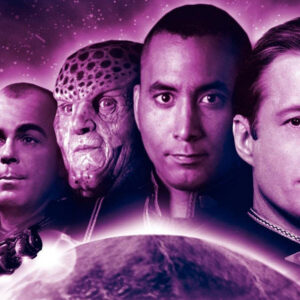Last Updated on June 13, 2024
The 1990s were a great time for television sci-fi. It was the heyday of Star Trek, with The Next Generation, Deep Space Nine and Voyager all running in syndication. But, at the same time, another science fiction show, Babylon 5, pushed the envelope and arguably paved the way for loftier fare, such as the acclaimed Battlestar: Galactica reboot. What made Babylon 5 so special?
For one thing, it pioneered the idea of serialized television. Under the helm of J. Michael Straczynski, who dipped his toe into similar fare with the short-lived Captain Power and the Soldiers of the Future (another Gone But Not Forgotten favourite), Babylon 5 was unique in that it told one continuous story over its five-season run. If you were a fan of the show, you really couldn’t afford to miss one episode, with so much continuity between each episode that the entry point for non-viewers was almost non-existent. Many of us who watched it got into it when it started airing in re-runs (such as on The Space Channel in Canada) where you could record every episode to avoid missing anything. All this made the show more cultish and niche, but it was great.
In this episode of Gone But Not Forgotten, we dig into Straczynski’s epic, including how a season two retool, which introduced Tron star Bruce Boxleitner as the series’s heroic protagonist, Captain John Sheridan, helped ground a highly political series which, like most really good sci-fi, was highly allegorical in its depiction of interplanetary war, religion, faith, and more. While the archaic CGI has made the show a challenge to watch for newer generations, it remains a landmark series that was a huge event for those of us who grew up in the 90s, and deserves to be remembered.
Check out our video (embedded above) and let us know if you think the series stands the test of time!




















Follow the JOBLO MOVIE NETWORK
Follow us on YOUTUBE
Follow ARROW IN THE HEAD
Follow AITH on YOUTUBE